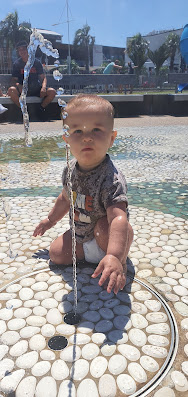Mokopuna, the reflection
There are many times that Te Whāriki uses the term mokopuna when talking about the tamaiti. Mokopuna in the Te Whāriki glossary is explained as -” expresses intergenerational connectedness”. The below words from Che Wilson have been sitting with me for a few weeks, as I have pondered on the importance of this connection to past, present and future. In the book Te Kai a te Rangatira, Che Wilson, (Ngāti Rangi-Whanganui, Ngā Rauru, Ngāti Apa, Mōkai Pātea, Ngāti Tūwharetoa) said, “A person is measured by the length and breadth of their shadow. That means that your shadow is a representation of your tūpuna. It’s a representation of the people who support you. Uncle would always say that if you stand in the right place your shadow is as big as your wharepuni - or again, if you stand in another place it can be as big as your mountain. If we don’t have that bigger shadow, we’re only ‘me, myself, and I’, and that is pretty lonely. If you know that you have that support, you can lean into it when you need it.”
How do we acknowledge this shadow that Che is talking about in ECE? One of the ways I think we can do this is through learning stories. The learning stories will travel through time with the mokopuna, stories are powerful ways of talking about the mokopuna and everyone that is reflected in them. To quote Trent Hohaia, “words shape worlds”. The worlds that we write about the mokopuna and their whānau shape their view of themselves, this is how we shape their world. Words shape worlds is a challenge to us to ensure that we are continually upholding the mana of the child and the whānau with our words and actions.
“Kaupapa Māori assessment is concerned with enhancing the mana of the child and their whānau. This means placing Māori constructs of the child and their whānau in the centre of the frame, ensuring that assessment captures the strengths, abilities and competencies of the mokopuna and their whānau.” (Te Whatu Pokeka, 2009)What do the words '“assessment captures the strengths, abilities and competencies of the mokopuna and their whānau” look like in assessment? Recently I wrote about Ollie, one of my moko, who has just started attending an early childhood centre. Sharing my thoughts with the centre through a story my hope is that they gain some knowledge of who Ollie is and all that he represents. I want them to know some of the people that make up Ollie’s shadow. This link will take you to his story. Curious, observant, determined me and all that I bring.
Many years ago I wrote a learning story for another one of my moko, Taylor. Again in this story I have tried to consider the strengths, abilities and competencies not just of Taylor but of his whānau as well. Here is his story- Bravery Has Many Resting Places.
As my moko grow I have wanted them to be fierce, to be proud, to stand tall in all that they represent. To quote Te Whāriki, “Tū mai e moko.Te whakaata o ō mātua.Te moko o ō tīpuna. Stand strong, O moko. The reflection of your parents. The blueprint of your ancestors.” I have looked into and retold the pūrākau which hold the historical accounts of those that have gone before them in order that they will understand the amazingness of all that they bring. An example of this was in my story for Roman, Roman The Storyteller Has Been Here. Roman's story links him to the heroes that form part of the shadow that he brings with him.
To understand the mokopuna that enters our centre whānau we also need to understand the hopes, dreams, vision and stories of those in their shadow. The shadow that can be as big as a mountain.
Aroha nui
Lynn


Comments
Post a Comment